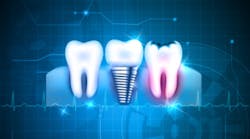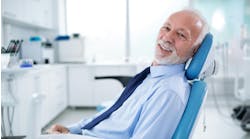The field of dental hygiene is constantly changing as our industry evolves. The introduction of new techniques and technologies into our practices affects how we treat patients. At times, it can be overwhelming to grapple with all the innovations, but here’s some advice to help you embrace digital dentistry and not shy away from it.
Stay up to date on technology
Staying current on the newest dental technologies enables us to provide the best possible care to our patients. Staying up to date takes many different forms, whether that’s continuing education, extra training courses, technology pilot programs, hygiene news outlets, or conferences. We all have CE requirements, but going above and beyond could make all the difference to our patients.
In my practice, being well versed in electronic health records, digital x-rays, and laser therapy for bacterial decontamination has improved my workflow and helped me provide quality patient care. These are just a few of the new technologies I use in the Aspen Dental office where I work.
All dental staff have access to not only the most cutting-edge technology, but also in-depth training to make sure we’re comfortable implementing the technologies in our practices. We can also participate in pilot programs; my practice was one of the first in the country to pilot Aspen Dental’s voice-activated periodontal charting technology, which we’ve since incorporated into our daily workflow to great effect.
You might also be interested in: How Aspen Dental uses digital dental assistant technology
Keep your patients informed
If technology is new to you as a dental professional, then it’s even more unfamiliar to your patients. As you work with new modes of treatment, be sure to explain the technology to your patients in terms of what it’s doing and how it works, as well as why it’s the best option for their treatment plan.
For example, when using bacterial decontamination laser therapy, I make sure to explain what the technology does as well as how it will benefit the patient’s oral health. Patients aren’t always well-informed about the stages of periodontal disease, and giving them a primer about gingivitis, periodontitis, and periodontal disease and where they fall within that spectrum helps them feel more comfortable with the innovative treatment. I also explain how their oral health got to the point where laser therapy is needed, as well as how to prevent their condition from getting worse.
Finally, I discuss the nondental benefits of new treatments, which can include cost savings, better access to care, and greater convenience. By keeping patients informed and educating them every step of the way, I build the trust needed to provide the best care.
Selecting the right technology
Just because we have access to all these new and exciting technologies doesn’t mean every patient is a good candidate for every cutting-edge treatment. As hygienists, we must make sure we treat every case individually to personalize the treatment plan based on patients’ needs. Some treatments, even if they use the most state-of-the-art technology, won’t work optimally for every patient. You might have patients who are allergic to certain treatments, have anxiety about the dentist, or have missing teeth or severe decay that need a different course of action.
Choosing the right equipment to treat a patient requires knowledge of the latest technology, but it also requires compassion when dealing with patients who have active diseases or dental anxieties. Everything comes down to providing the best care, so let each case and your expertise lead you to the right treatment and technology.
Build trust to get patients to “yes”
When implemented optimally, new technology can be a game changer not only for us, but also for our patients. By staying current on the newest technology, we can build our confidence, which will help establish trust with our patients. When patients trust us, they’re more likely to accept treatment and feel comfortable with the care we provide.
Digital dentistry will undoubtedly change the way we treat our patients. By embracing the advancements being made every day, we can work to increase access to care and get every patient who sits in our chair to say “yes” to treatment.






